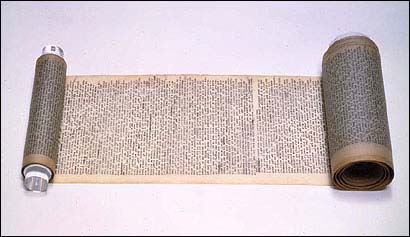It’s literary legend, how Jack Kerouac wrote his breakthrough novel “On the Road" in a three-week frenzy of creativity in spring 1951, typing the story without paragraphs or page breaks onto a 119-foot scroll of nearly translucent paper.
In fact, the Lowell native revised the book many times before it was published six years later, and while the scroll came to symbolize the spontaneity of the Beat Generation, the early, unedited version of the novel never reached the public.
Now, in time to coincide with the 50th anniversary of the novel’s publication, the version of “On the Road" that Kerouac wrote on the scroll will be published next year in book form for the first time, said John Sampas of Lowell, the executor of the writer’s literary estate and the brother of his third wife, Stella. It will include some sections that had been cut from the novel because of references to sex or drugs.
The agreement between the Kerouac estate and the New York publisher Viking Penguin is an important development for literary scholars and Kerouac fanatics who have never had access to the original draft.
The scroll contains numerous passages that were edited out of the book and uses the original names of characters who were closely modeled on friends of Kerouac, including fellow writers William S. Burroughs and Allen Ginsberg.
“It is a big deal, and it will be of great interest to Kerouac scholars," said Hilary Holladay, director of the Kerouac Center for American Studies at the University of Massachusetts at Lowell. “He had worked on and off before on that particular draft, but this was like a complete birth of the story."
The original scroll, long part of Kerouac’s estate, was sold to Indianapolis Colts owner James Irsay in 2001 for a record-setting $2.43 million. It is currently drawing crowds on a national tour, recently extended through 2008, and it will be exhibited in Lowell next summer at the Boott Cotton Mills Museum.
The iconic manuscript will return to its author’s home city at a time of growing local interest in Kerouac, after decades in which the writer was largely ignored, in part because of his appetites for drugs and alcohol. In the past five years, local leaders have pressed the state for highway signs to advertise the city as Kerouac’s birthplace and advocated for the state to declare a Jack Kerouac Day.
Outside Lowell, the writer has also gained popularity. Sampas, the executor of Kerouac’s estate, said he was inspired to publish the scroll version of the novel after seeing the interest of young scholars at an academic conference at UMass-Lowell last fall. After inviting Kerouac specialists to dinner, he brought them to his Lowell home and shared some of the writer’s private papers with them.
“They were enthralled, and it was a wonderful experience, feeling their awe," he recalled. “It permeated the room."
He asked the four students, who are pursuing advanced literary degrees at universities in Denver, New York, London, and Melbourne, to serve as editors of the new version, and they agreed.
It remains to be seen exactly how they will present the original Kerouac story, which was typed as one freewheeling, single-spaced paragraph. Eager to write freely and continuously, without pausing to pull finished pages from his typewriter and insert new ones, Kerouac typed instead on 12-foot rolls of paper that he later Scotch-taped together, Sampas said.
Living in New York in 1951 and writing about his recent cross-country adventures, Kerouac worked from his own notes, journals, and letters, and frequently added notes and corrections over the typewritten text.
He had previously worked on the book in scattered bursts, but finally laid it all out on paper in a single three-week sprint, Holladay said.
Some specialists say they prefer the unedited version, which features a different first sentence than the published novel, as well as a more abrupt ending.
A cocker spaniel owned by one of Kerouac’s friends apparently ate the last section, according to Jim Canary, the head of special collections conservation at Indiana University’s Lilly Library. ![]()


